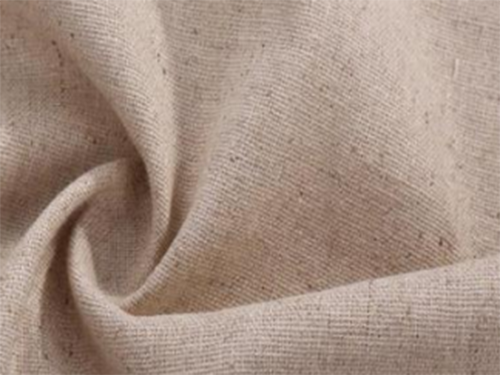
What is the pre-treatment of hemp? So how should we handle linen fabrics?
The total biomass content of fibers such as lignin, pectin, wax, and nitrogen-containing substances in flax and ramie is as high as about 30%, while the non cellulose mass fraction of cotton fibers is only about 6%. These fiber symbionts increase the difficulty of pretreatment before dyeing, especially lignin, which has good chemical stability and is difficult to remove. These residual fiber co organisms cause problems such as poor dyeability, low dye uptake, dull color light, easy occurrence of light white spots, and poor dyeing fastness of hemp fibers, directly hindering the development of the hemp textile industry. Therefore, pretreatment is necessary to improve the dyeing and finishing performance of hemp fibers. The quality of pre-treatment directly affects the control of product quality and holds a crucial position.
1. Singeing
Hemp fibers have outstanding rigidity, poor adhesion between fibers, long surface hairiness on the fabric, and are difficult to remove, requiring singeing. In the production process, linen fabrics are generally singed twice. Before burning, brush the hair to remove the hemp shavings and make the fabric cilia stand upright. Ramie has a high moisture content, so it is best to dry or fully ventilate before singeing to ensure the effect of singeing. After the fabric is washed, boiled, and bleached, with the removal of slurry and mechanical friction, new hairiness will appear on the surface of the fabric, resulting in poor surface finish and the need for a second singeing.
The general process is: first singeing, two positive and two negative, with a speed of 80-90 m/min; The second singeing can be adjusted according to the fabric structure and surface conditions, including the number of positive and negative times, vehicle speed, and flame, to ensure the singeing effect and prevent overburning. According to the situation of the fabric, a single singeing can also be used, and then a biological enzyme finishing can be used during the finishing process to achieve a smooth and clean surface of the fabric.
2. Desizing
The purpose of desizing is to remove the size and some impurities from the fabric. Light and thin linen fabrics often adopt a cold pile process that combines annealing, boiling, or bleaching; Medium and thick fabrics often use a separate process of desizing and scouring. Separate desizing can be achieved by using biological enzymes or other methods to remove the size from the fabric based on the size on the fabric. The use of biological enzymes for desizing not only saves chemical raw materials, shortens process time, but also reduces labor intensity and improves product quality, which is the direction of fabric desizing development.
3. Boiling and bleaching
Boiling and bleaching of linen fabrics mainly involves removing residual co organisms such as lignin and pectin from the fibers, making the fabric have a certain degree of water absorption and facilitating the adsorption and diffusion of dyes and chemical agents, in order to improve the dyeing and dye uptake rate of the fabric. Because some yarns are wet spun, they undergo boiling and bleaching before spinning, resulting in a certain improvement in fiber purification and whiteness. When formulating the boiling and bleaching process for hemp fabrics, it is necessary to treat them differently. Generally, wet spinning or dry spinning are used for hemp fiber spinning. When wet spinning, the process from roving to fine yarn requires a boiling and bleaching process. The main purpose of boiling and bleaching is to remove impurities such as pectin and lignin from the roving fibers, separate and refine the coarse fiber bundles, improve fiber softness, and create conditions for spinning high count fine yarns. Dry spinning does not involve the process of boiling and bleaching.
Dongguan Tiansheng Chemical has many pre-treatment additives, and many are also suitable for linen fabrics!
About
Brief introduction Application Certificate Laboratory Connectproduct
Post finishing agent Enzymatic water Brightener Printing/Coating Additives MoreNews
Dynamic Lnformation Common
Mobile website

TRL:+86 0769-88124837
Chinese mailbox:dgtshdrl@163.com
English mailbox:postmaster@tianshengchem.com
Guangdong Tiansheng Environmental Protection New Material Technology Co., Ltd. Copyright © 2023 all rights reserved